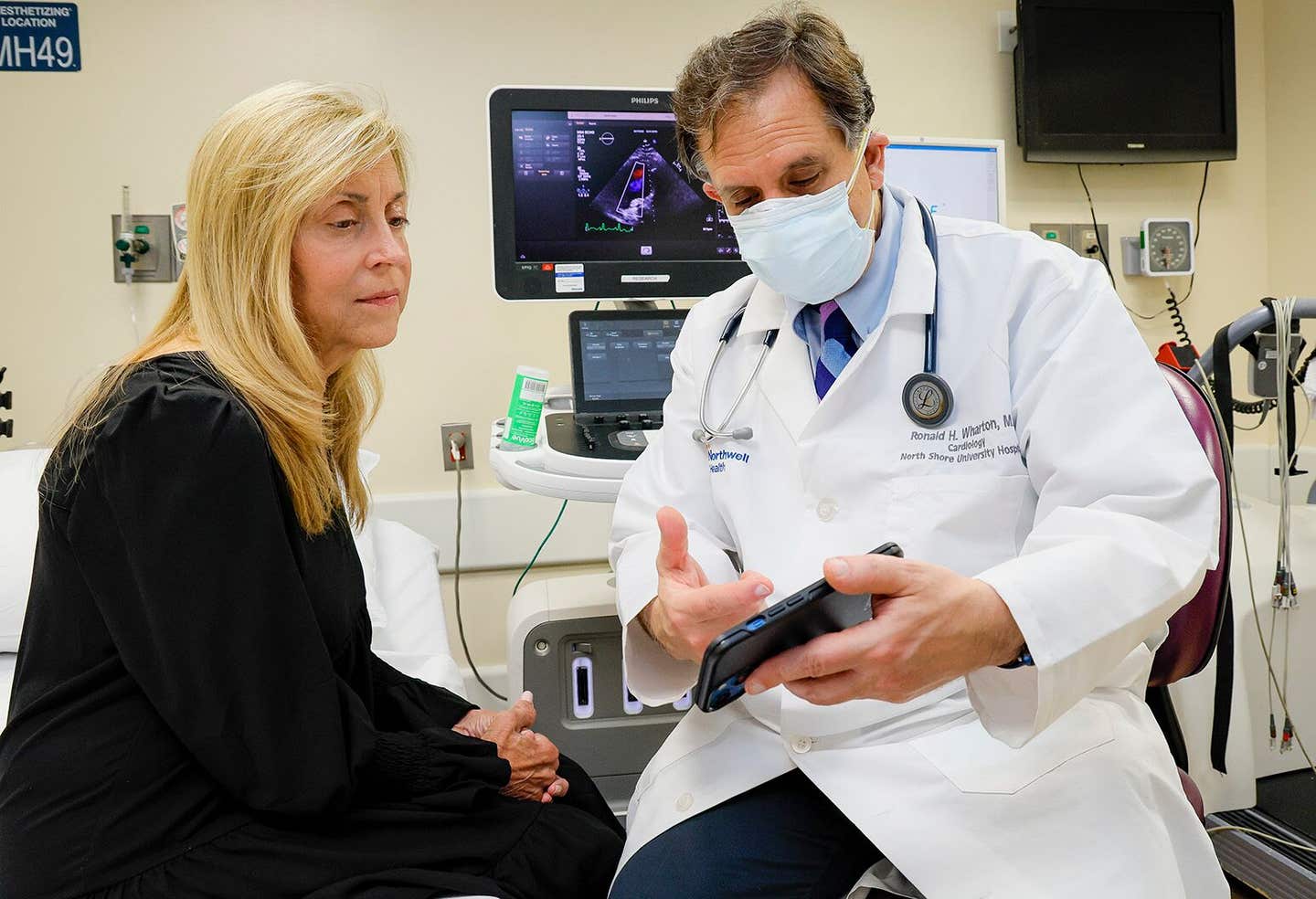New AI tool spots hidden heart disease with high degree of accuracy
A new AI model helps doctors detect hypertrophic cardiomyopathy earlier, giving patients clearer diagnoses and life-saving care faster.

AI helps detect hypertrophic cardiomyopathy earlier, revealing hidden cases and improving care for patients with this silent heart disease. (CREDIT: Northwell)
Doctors have long called hypertrophic cardiomyopathy (HCM) “the great masquerader.” It hides in plain sight, often mistaken for other heart issues. This condition affects the heart muscle, causing it to thicken and stiffen. That makes it harder for blood to flow properly and increases the risk of dangerous complications, including heart failure and sudden death.
Although HCM is one of the most common inherited heart conditions, it often goes unnoticed. Experts say that about 85% of people who have HCM do not know they have it. Many only learn about it after experiencing symptoms or sudden cardiac events.
But now, scientists and doctors are turning to artificial intelligence (AI) to unmask this silent disease. A newly enhanced algorithm, called Viz HCM, combines deep learning with ECG analysis and may help doctors spot this hidden condition earlier and with greater accuracy.
A Disease That Hides in Plain Sight
HCM affects about 1 in 200 people worldwide. That means millions of people live with this disease without knowing it. It is one of the leading causes of heart transplants and sudden cardiac death, especially among young people.
What makes HCM so hard to detect is that its signs often resemble those of other heart problems. Doctors may miss the diagnosis unless patients undergo specific tests, like an echocardiogram or MRI. Often, patients only get these tests after symptoms like chest pain, shortness of breath, or fainting spells appear—usually when the disease has already advanced.
Dr. Matthew Martinez, a leading cardiologist in HCM and sports medicine, says artificial intelligence can play a major role in changing this. “By using AI with ECG and improving care coordination, we can reveal more hidden cases and make care faster and more efficient,” he explains.
Related Stories
AI That Does More Than Just Flag
The Viz HCM algorithm had already been approved by the U.S. Food and Drug Administration (FDA) to detect HCM based on electrocardiogram (ECG) readings. But researchers at Mount Sinai Hospital saw a chance to improve the system even further.
In a study published in the journal NEJM AI, scientists developed a method to calibrate the algorithm. Instead of just giving a simple alert like “high risk of HCM,” the new system assigns a clear probability score.
“You now get something like, ‘You have about a 60 percent chance of having HCM,’” says Dr. Joshua Lampert, the study’s lead author. He serves as Director of Machine Learning at Mount Sinai’s heart hospital.
This new detail helps doctors and patients alike. Patients get a better idea of their personal risk. Doctors can make quicker, more informed decisions about who needs further tests or care. This is especially helpful when early treatment can stop serious problems before they start.
Testing the Tool on a Massive Scale
Researchers tested the improved AI tool on nearly 71,000 patients who had ECGs between March 2023 and January 2024. The algorithm flagged 1,522 people as possibly having HCM. Doctors then checked the patients’ records and imaging tests to confirm diagnoses.
After confirming cases, scientists checked how well the AI’s predictions matched real outcomes. The results showed that the calibrated model gave an accurate risk score. The higher the AI’s risk number, the more likely a patient truly had HCM.
With this new tool, doctors can sort their patient lists by risk level. That means those in the most danger can get appointments, tests, or treatment sooner. As Dr. Lampert explains, this approach offers "more meaningful information" that helps "improve clinical workflows."
Personalized Care, Backed by Science
The benefits go beyond catching disease early. Doctors can now explain AI results in a way that patients understand. Instead of vague alerts, they can share specific risk levels. That may help patients feel more involved in their care and more likely to follow through on treatment plans.
“This study provides much-needed granularity to help rethink how we triage, risk-stratify, and counsel patients,” says Dr. Vivek Reddy, a co-senior author. He believes this method shows how artificial intelligence can bring real-world benefits, even in rare or complex diseases like HCM.
Dr. Girish Nadkarni, another senior author, agrees. “It’s not just about building a high-performing algorithm—it’s about making sure it supports clinical decision-making,” he says. Nadkarni sees this study as an example of “pragmatic implementation science”—turning data science into better patient care.
Looking Ahead: A Smarter Way to Treat Heart Disease
The new version of Viz HCM doesn’t replace doctors. Instead, it works with them to find the most at-risk patients faster. This can be a game changer, especially in busy hospitals with limited resources. Mount Sinai’s next goal is to expand the system across more health centers. That way, more patients across the country can benefit from early detection and personalized care.
The technology may also help with other diseases in the future. By adjusting algorithms to provide risk percentages, doctors can better use AI to support diagnoses and treatment plans in many areas of medicine. Dr. Martinez emphasizes the promise of this combined approach. “Using artificial intelligence with ECG analysis and care coordination lifts the mask that hides HCM,” he says. “It brings new clarity to how we treat patients and protect their health.”
A New Age in Heart Health
The fusion of AI and heart health signals a powerful shift in medicine. For conditions like HCM, where late diagnosis can be fatal, early detection can mean the difference between life and death. And now, thanks to smart algorithms and thoughtful research, the tools to unmask this great masquerader are finally here.
Note: The article above provided above by The Brighter Side of News.
Like these kind of feel good stories? Get The Brighter Side of News' newsletter.



